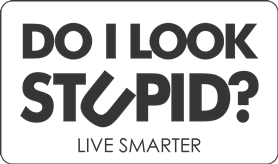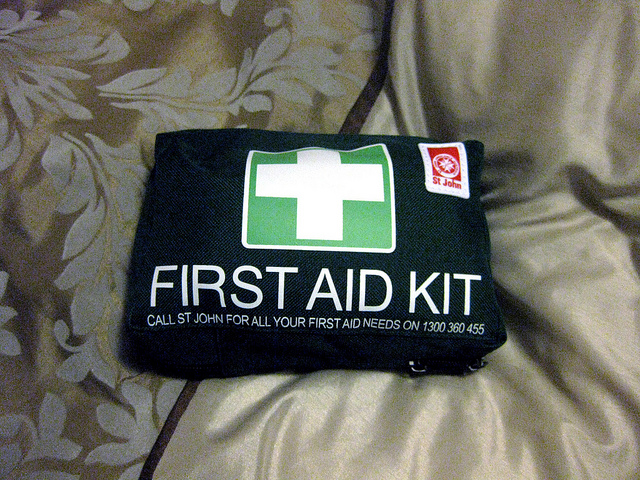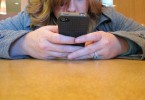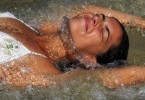Most of us have our medicines lying around the house or at best on a shelf somewhere in the home. Do we make a conscious effort to replenish drugs after they have been consumed? Do we look to see if the medicines we have in our homes have expired? How many of us have a First Aid kit that is well-stocked and regularly up-dated?
A medical kit should be one of the most essential items in your home especially if you have kids. This is mainly intended to treat minor injuries and illnesses but your kit should be equipped to also deal with emergency situations till such time as you can get proper medical attention. One of the first things you should do, when assembling your kit, is to affix the telephone number of your doctor, the address of your nearest hospital and its telephone number on the inside of your kit. It would also be a good idea to include a brief medical history of members of your family here: things like blood groups, allergies to any specific medication etc.
What you need is a good, sturdy plastic or metal box that should be kept well out of the reach of children. If this is not possible then do get a box that can be locked. The key should be put in a place that is accessible and known to all the adults in the house. The duplicate key can be put onto your personal key-ring. While travelling, do ensure that children do not have charge of this kit: it must be kept in the care of an adult.
Most families have a tendency to store medicines in the bathroom cabinet. This is not advisable as bathrooms can be damp and subject to pronounced changes in temperature. This may affect the strength and durability of some medications. Even if you do store your kit in a cool and well-ventilated area, it is best to know that certain drugs including travel-sickness pills and antiseptic creams have a life of less than three years. Similarly, unless painkillers like paracetamol are kept in a dry atmosphere and in tightly sealed containers, they can deteriorate after a year. Cough syrup too, must be tightly capped. As a rule of thumb therefore, family medication should have an effective life of a year. If patent medicines like kaolin for diarrhea settle out and do not respond to rapid shaking then the settlement has gone too far and the medicine is no longer effective. Bandages, dressings and plasters are
some other items that do not last after two years. So here apply the rule: when in doubt cut it out. Remember: medicines that have expired should be flushed down the toilet – this way they won’t fall into the wrong hands.
The most common family ailments are cuts and grazes, headaches, coughs, indigestion, insect bites and stomach upsets. All these can be treated from the basic medical kit that you will prepare. By adding a few extras you will also be able to deal with toothaches, temporary constipation, diarrhea, strained muscles and travel sickness. Now that we have identified the type of medicines you require, we will examine what you should keep in the kit…
• Adhesive plaster strips Rolls of various widths, for securing or applying dressings.
• Antiseptic cream Use on cuts and grazes and cover with a dressing. Do not apply cream to burns or scalds.
• Tube of Burnol Use on minor kitchen burns.
• Dettol Use a capful in a mug of water for cleaning wounds.
• Bandages Also used to protect lint dressings. Two rolls one inch wide will meet most needs. A roll of crepe bandage is useful for awkward shapes such as hands and feet.
• Calamine lotion For insect bites, bee and wasp stings, nettle rash and sunburn.
• Elastic plasters (waterproof) A packet of assorted sizes for small cuts and grazes.
• Pain-relieving tablets Paracetamol tablets
• Safety-pins Assorted sizes for securing bandages (nappy pins are a good idea)
• Scissors Blunt-ended for cutting bandages and dressings
• Sodium bicarbonate/Digene For relieving indigestion. This should not be taken regularly as after its beneficial effect has worn off it can produce stomach acid.
• Sterilised lint dressings Various sizes: two large and four medium should do the trick!
• Thermometer Keep this in a metal or plastic tube to prevent breakage. Normal body temperature is 98.4 degrees Fahrenheit or 37.0 degrees Centigrade.
• Tweezers Square-ended for removing thorns and splinters.
• Eye-bath Use with warm water to wash dirt and dust from the eye.
• Cotton wool Can be used to clean wounds or used as a dressing for a sprained ankle, when held in place by a bandage.
• Kaolin-and-morphine mixture For relieving diarrhea.
• Methyl salicylate ointment For easing pain and spasms in strained and bruised muscles.
• Milk of Magnesia For relieving constipation and heartburn.
• Oil of Cloves Paint on the aching tooth for temporary relief.
• Sterilised eye-pad For covering infected eye.
• Sterilised absorbent gauze Use dry to cover a small wound and use wet for cleansing.
• Travel-sickness tablets Take about 30 minutes before starting a journey or as directed.
So now that you have stocked your First Aid kit and kept it in a secure place, remember to check it out every month to see that it is well-stocked and up-dated.
Visual Courtesy:http://www.flickr.com/photos/vinni/4834221084/







